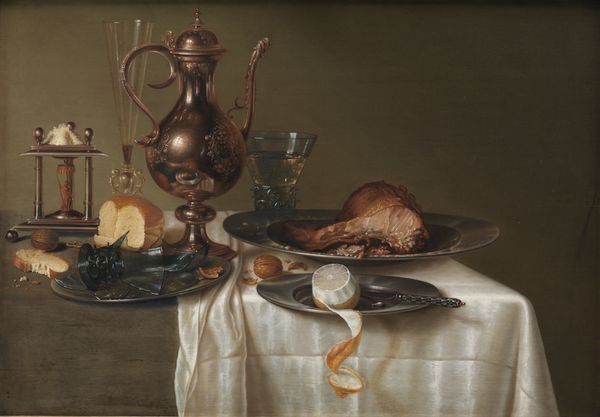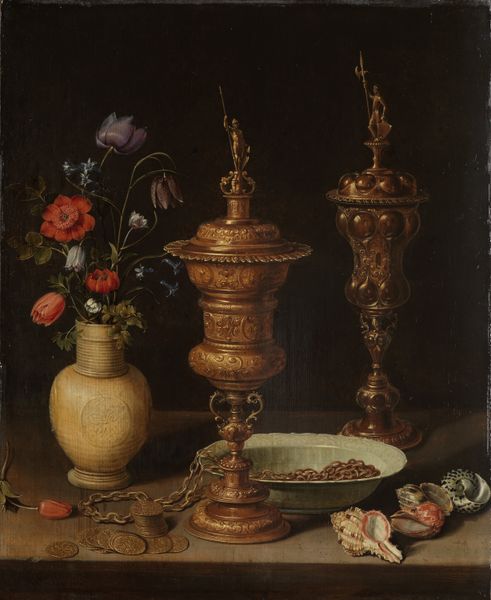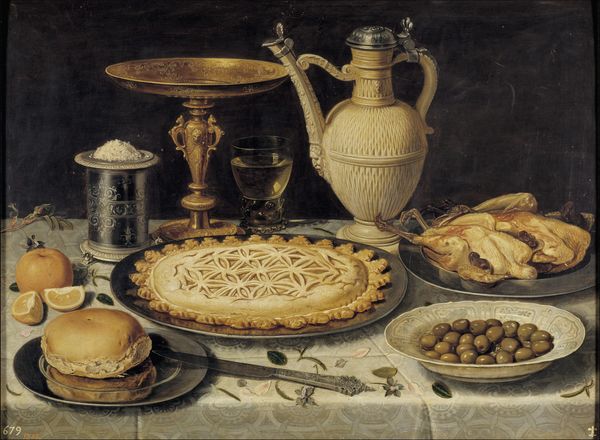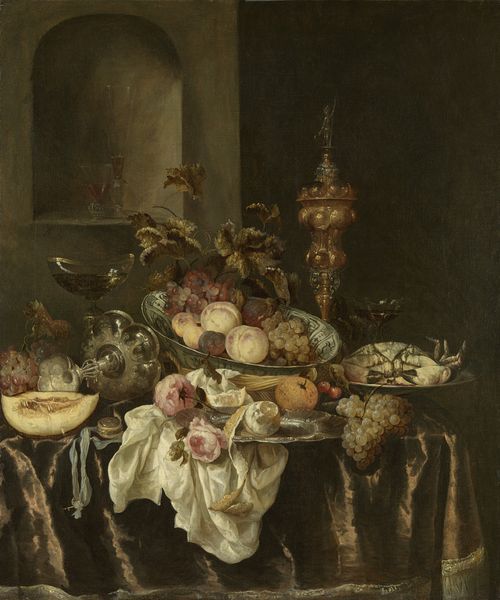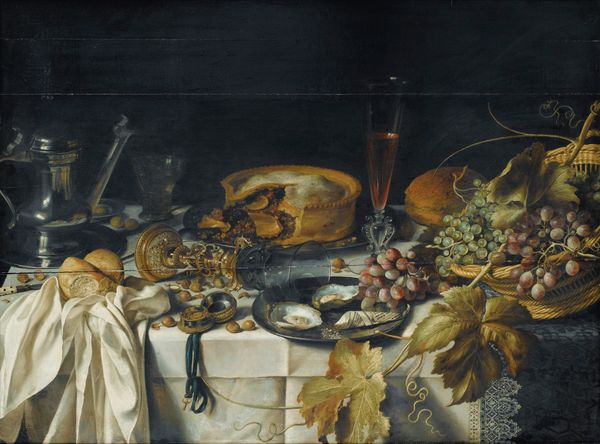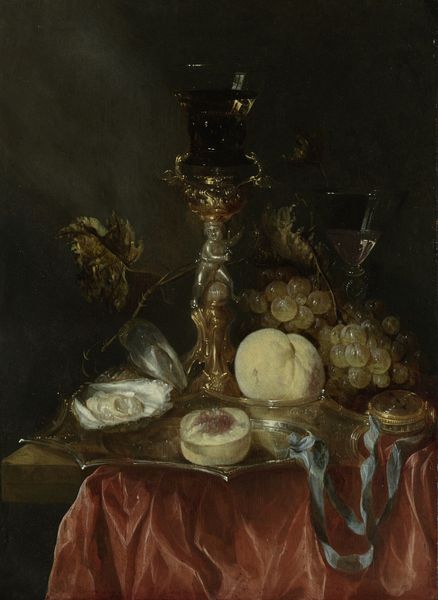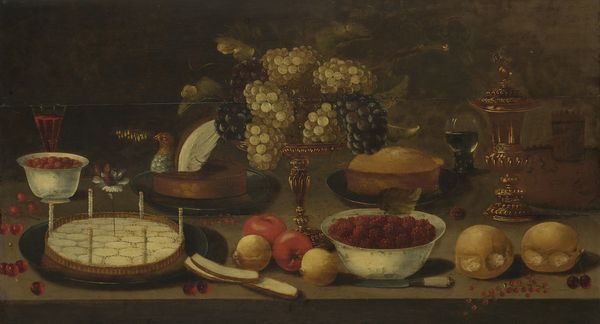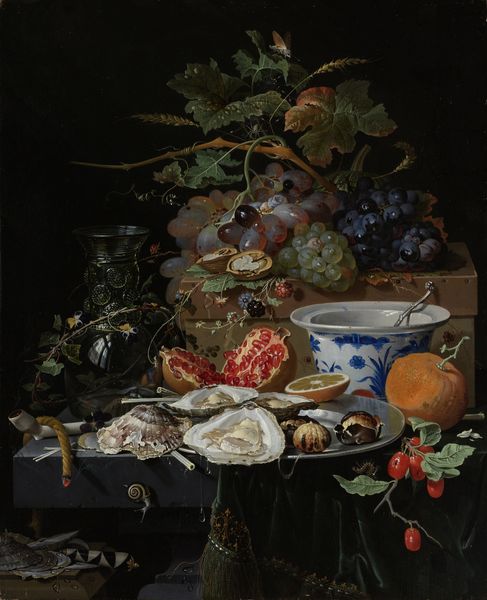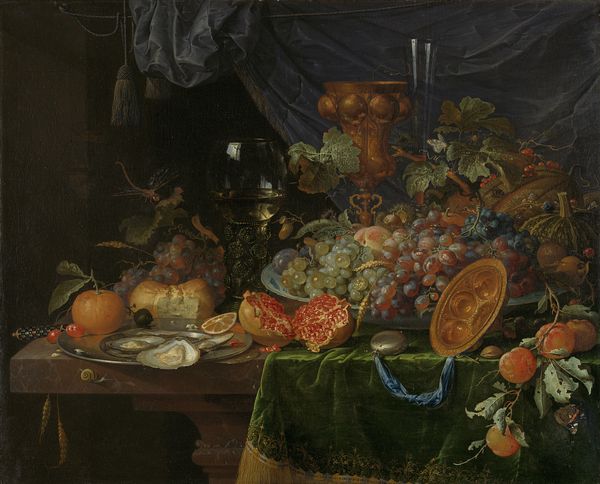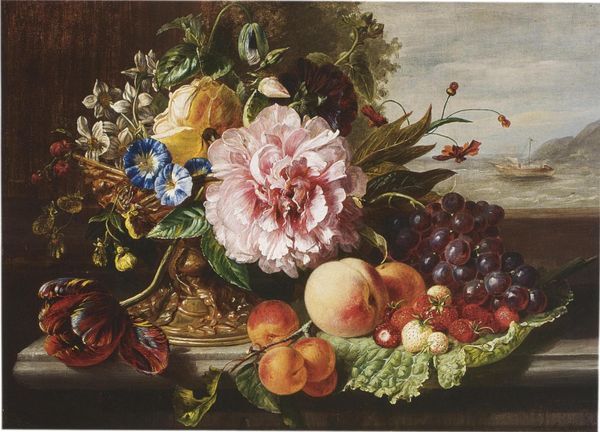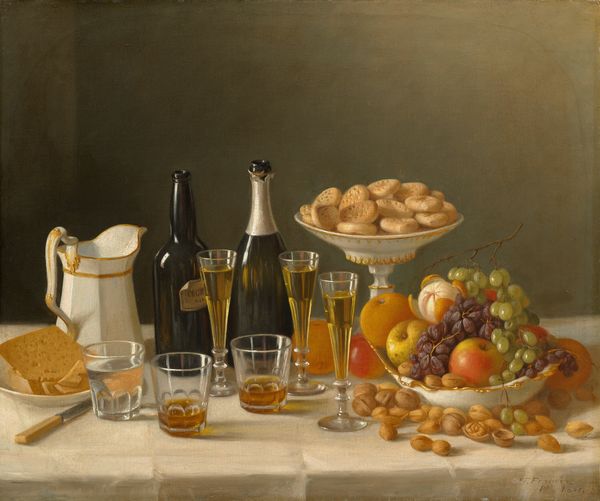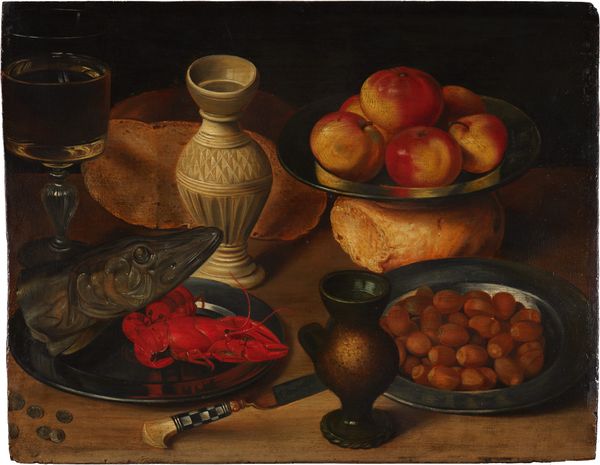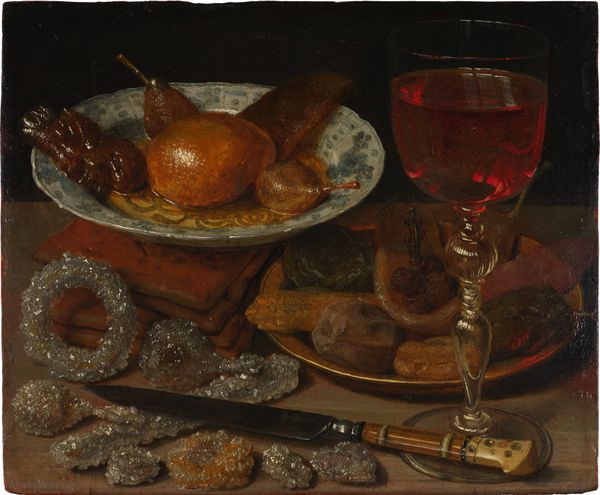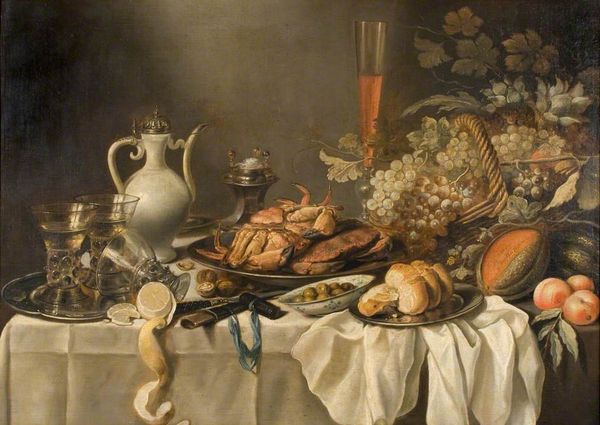
painting, oil-paint
#
portrait
#
food
#
baroque
#
pottery
#
dutch-golden-age
#
painting
#
oil-paint
#
figuration
#
genre-painting
#
realism
Dimensions: 52 x 73 cm
Copyright: Public domain
Back in 2016, the Spanish national art museum at the Museo del Prado held its first ever exhibition devoted to the work of a female painter, titled The Art of Clara Peeters. The Flemish painter is best known for her Baroque still-lives which often depict sumptuous banquet scenes alongside flowers and metalware. In Still Life with Nuts, Candy and Flowers (1611), Peeters portrays an abundance of rich foods, wine, and luxurious objects. A porcelain vase, fluted wine glass, and vessels made of precious metals are rendered with impressive realism. Light reflects on the polished metal to create a Baroque theatricality and grandeur. The colour palette of warm browns, gold, and silver builds a sense of wealth and plenty. The scene, however, is not simply a representation of prosperity. Peeters has infused the painting with suggestions to the fleeting nature of material pleasures. The bouquet of flowers placed on the left side of the table appears wilted, and petals have fallen to the tabletop. Perhaps this is a reference to human mortality and the fragility of existence. Paintings exploring these themes, termed ‘momento mori’ or ‘vanitas’, were common in Flemish art of the seventeenth century. During this time, the career opportunities for female artists were restricted. Women were excluded from life drawing training, so were unable to study human anatomy. Thus, women were restricted from the prestigious genre of history painting, and could only access less respected genres such as the still life. In Still Life with Nuts, Candy and Flowers, Peeters’ reflection can be seen in the polished glassware and metalware. Perhaps these miniscule self-portraits were intended to remind the viewer of her identity as a woman painter in a patriarchal art world. Little definite information is known about Peeters’ life. Essential biographical details, including her dates of birth and death, are disputed. This speaks to the consistent undervaluing of female artists in the traditional art historical canon. In the past decades, the work of Clara Peeters has been awarded a renewed interest. Zoom into the shiny surface of the pewter jug on the right side of the painting. Do you see the figure of Peeters? Why do you think she chose to include this? Editor: Lucy Jude Grantham
